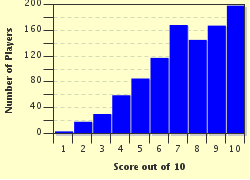Quiz Answer Key and Fun Facts
1. This picture shows an arrangement of rocks which dates from the Neolithic period. Similar structures, some from as early as around 5000 BCE, have been found in many places around the world, and are thought to have been used as funeral chambers. What is this kind of rock arrangement called?
2. Figurines like this one, called an ushabti, have been found in tombs of citizens from all walks of life, from servants to pharaohs. They were intended to act as servants in the afterlife for the deceased of what ancient civilization?
3. In a number of cultures, it was traditional to place the body of a dead person in a container lined with limestone, and to decorate its exterior symbolically. What is this type of container called?
4. This two-handled pot, called a loutrophoros, was used by the ancient Greeks to hold water used in two contrasting ceremonies. As well as being used in funerals, in what other type of celebration was it widely used?
5. Which of the Seven Wonders of the Ancient World, the ruins of which are shown here, was built to be the tomb of a Persian satrap and his wife?
6. This figurine of a soldier with a horse was found in a pit, along with thousands of companion figures, in a Chinese field in 1974. What nickname is given to this collection of figures, which dates from around 210 BCE?
7. This wall painting was found in the Goguryeo tomb complex near Pyongyang, North Korea. What is the term usually used to describe a painting that has been made on a wall?
8. This ceremonial helmet is a replica of one that comes from Sutton Hoo, near the town of Woodbridge in Suffolk, England. In 1939, excavation began on a burial site that was notable for which of the following reasons?
9. What quiz on funerary art could avoid this, one of the world's most famous tombs? What is the name of the mausoleum erected by the Mughal ruler Shah Jahan for his third wife, Mumtaz Mahal, in 17th century India?
10. Some memorials are found many miles away from the place of residence and death of the person to whom they form a tribute. This monument can be found in Vienna, far away from Santa Clara, Cuba, where the tomb of an Argentine Marxist freedom fighter can be found. He had been a major figure in the Cuban revolution; his remains were exhumed from Bolivia, where he had died in 1967, and returned to Cuba in 1997. Who was this doctor, author, and guerilla leader?
Source: Author
looney_tunes
This quiz was reviewed by FunTrivia editor
LadyCaitriona before going online.
Any errors found in FunTrivia content are routinely corrected through our feedback system.

